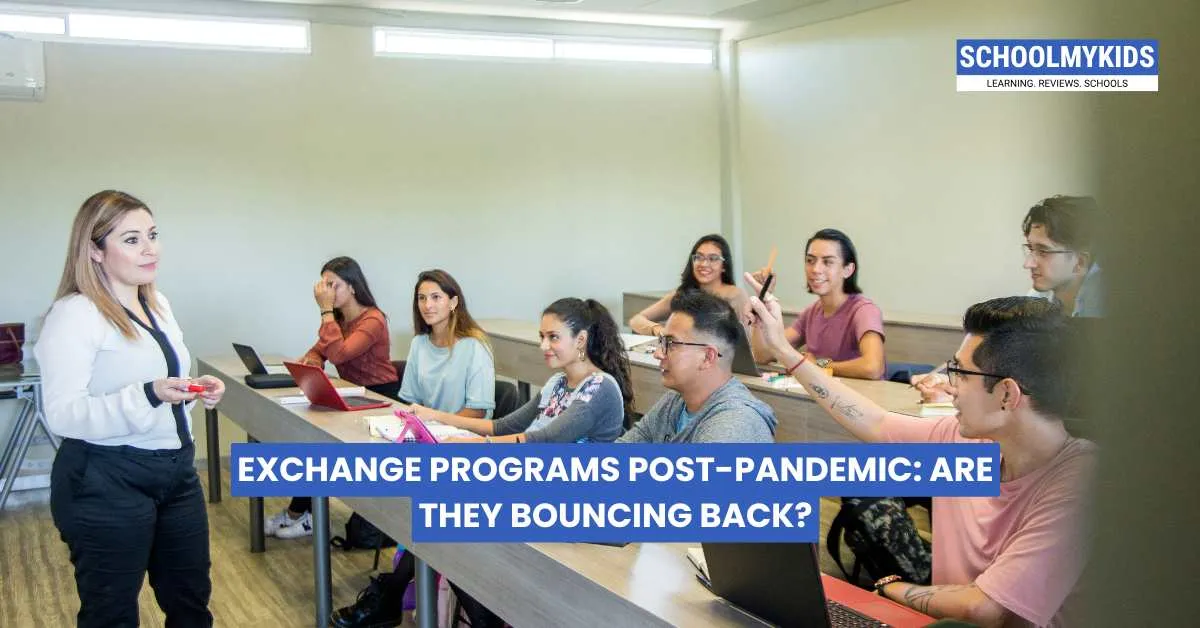What We Mean By “Exchange Programs”
By “exchange programs,” we mean academic exchanges, study-abroad initiatives, international student mobility, and faculty/student partnerships across borders. These are not leisure trips—they’re structured programs where learning, credit transfer, and cultural immersion are central.
The Damage the Pandemic Did
The pandemic hit exchange programs like a wrecking ball. Borders slammed shut, visas froze, and universities scrambled to cancel semesters abroad. Participation plummeted. In the U.S., the number of students studying abroad for credit dropped by more than 90 percent at the height of COVID. International enrollment also sank, hurting finances and stalling collaboration. Many institutions mothballed their international offices, unsure when or if mobility would return.
Signs of Recovery
1. Rebound in Numbers
Recent years show a sharp rebound. U.S. students studying abroad have surged back into the hundreds of thousands. Some universities now even exceed their pre-pandemic participation levels. Demand is strong—students want the experiences they were denied.
2. Return to In-Person
Where virtual exchanges once filled the void, in-person programs are now back in force. Full cancellations have become rare, and most institutions run a mix of in-person and hybrid options.
3. Changing Preferences
Many students favor shorter programs—summer, intersession, or faculty-led trips—over full-semester exchanges. These carry less financial and health risk while still offering cultural exposure. Nontraditional destinations are also reappearing, although Europe remains the anchor.
4. Institutional Outlook
Universities overwhelmingly expect study-abroad participation to grow or at least stabilize. They are rebuilding partnerships, re-staffing offices, and expanding program types. Optimism is high, even if cautious.
Where Recovery Is Lagging
- Financial Barriers: Rising costs of travel, insurance, and tuition abroad have become sharper obstacles. For many students, affordability is still the primary barrier.
- Unequal Recovery Across Regions: Europe and North America bounced back fastest, while destinations with stricter travel rules or political instability remain slower to recover.
- Administrative & Safety Concerns: Visa delays, new health rules, and lingering uncertainty still weigh on institutions.
- Underrepresented Students: First-generation, low-income, and minority students were already less likely to study abroad. Their participation is recovering much more slowly.
- Virtual Models: Online exchange programs remain as supplements but are rarely treated as full equivalents to physical immersion.
Are They Fully Back?
It depends. In some institutions, participation is at or above pre-pandemic levels. Others are still catching up, especially in regions outside Europe. The comeback is uneven, but the direction is clear: interest in exchange is high, and numbers continue climbing.
What’s Likely Next
- Growth in short-term and hybrid programs that balance affordability and risk.
- More financial aid and scholarships to improve access for underrepresented groups.
- Stronger emphasis on sustainability—addressing both equity and environmental impact.
- Diversification of destinations beyond the traditional hubs.
- Institutional contingency planning, with policies and virtual options ready if another disruption hits.
Conclusion
Exchange programs are bouncing back, though not in a simple, uniform way. Students are eager, institutions are investing again, and the numbers are climbing rapidly. Yet financial barriers, equity gaps, and uneven recovery across regions remain serious challenges. The pandemic exposed just how fragile international education systems can be. If universities want these programs to thrive long term, they will need to rebuild with resilience, inclusivity, and adaptability in mind.









Be the first one to comment on this story.